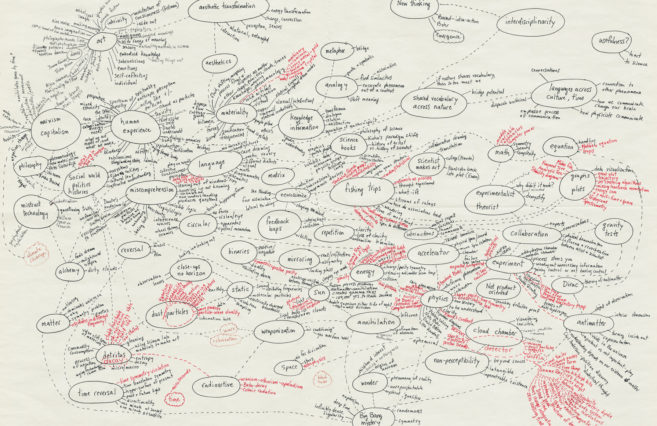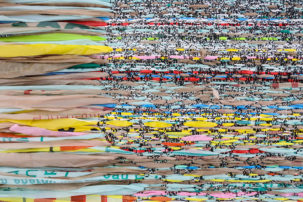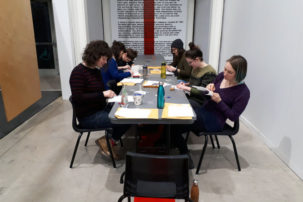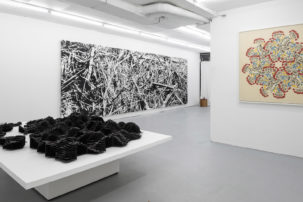Systems for classifying natural and cultural objects have existed for centuries, an early example being the European cabinet of curiosities that displayed global collections of items inside the houses of the wealthy. Over time, these collections became the building blocks for museums, where objects were labelled, conserved and exhibited. “Wild” brings together five contemporary artists whose works rebel against such well-established systems of classification. Emily Jan’s sculptural series The World is Bound by Secret Knots (2016–18) comprises animal-plant hybrids exhibited on Victorian-esque wooden furniture—referencing the study rooms where such displays were common. The specimens are playful, and overwhelm the carefully calculated character of this domestic display: bunches of red and yellow flowers turn into tropical birds, an anteater has a tail made of tulips and a tongue that mutates into a branch. These creatures refuse to fit within the confines of classification, as their very nature blurs the categories of flora and fauna.
Carrie Allison’s Beaded Botanicals (2018–19) are beaded sketches of endangered plants native to Mi’kma’ki, the Mi’kmaw territory, and are exhibited alongside their botanical referents, borrowed from the Nova Scotia Museum. Side by side, they highlight the differences between Western collecting systems and ways of knowing, which have a colonial history of erasing, renaming and decontextualizing, and Indigenous knowledge systems, which emphasize kinship and respectful relations between humans and the environment. The categories used by museum collections continue to influence the ways we understand objects. Whether it’s cultural objects classified as art or as ethnography, or natural history’s division of animal and human, these systems of classification often go unnoticed. “Wild” seeks to intervene and reflect upon classification through aberrant forms.

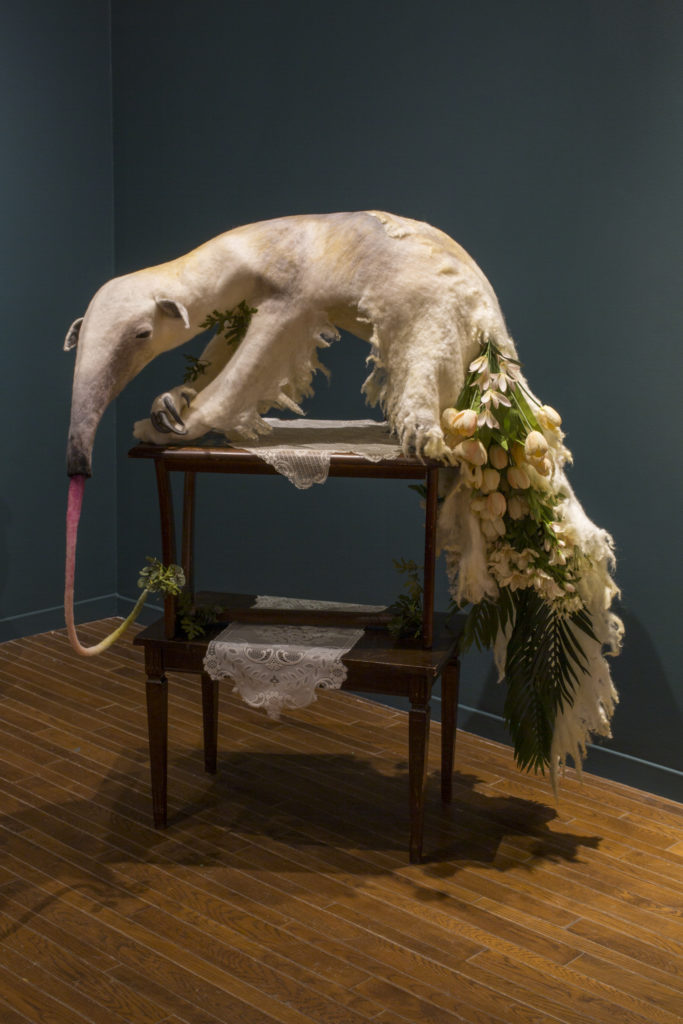 Emily Jan, Apologue I (Anteater) (from the series The World is Bound by Secret Knots), 2016. Wool, reed, hog gut, zip ties, resin, epoxy, silicone, found faux flowers, found tables and lace, dimensions variable. Photo: John Armstrong.
Emily Jan, Apologue I (Anteater) (from the series The World is Bound by Secret Knots), 2016. Wool, reed, hog gut, zip ties, resin, epoxy, silicone, found faux flowers, found tables and lace, dimensions variable. Photo: John Armstrong.
